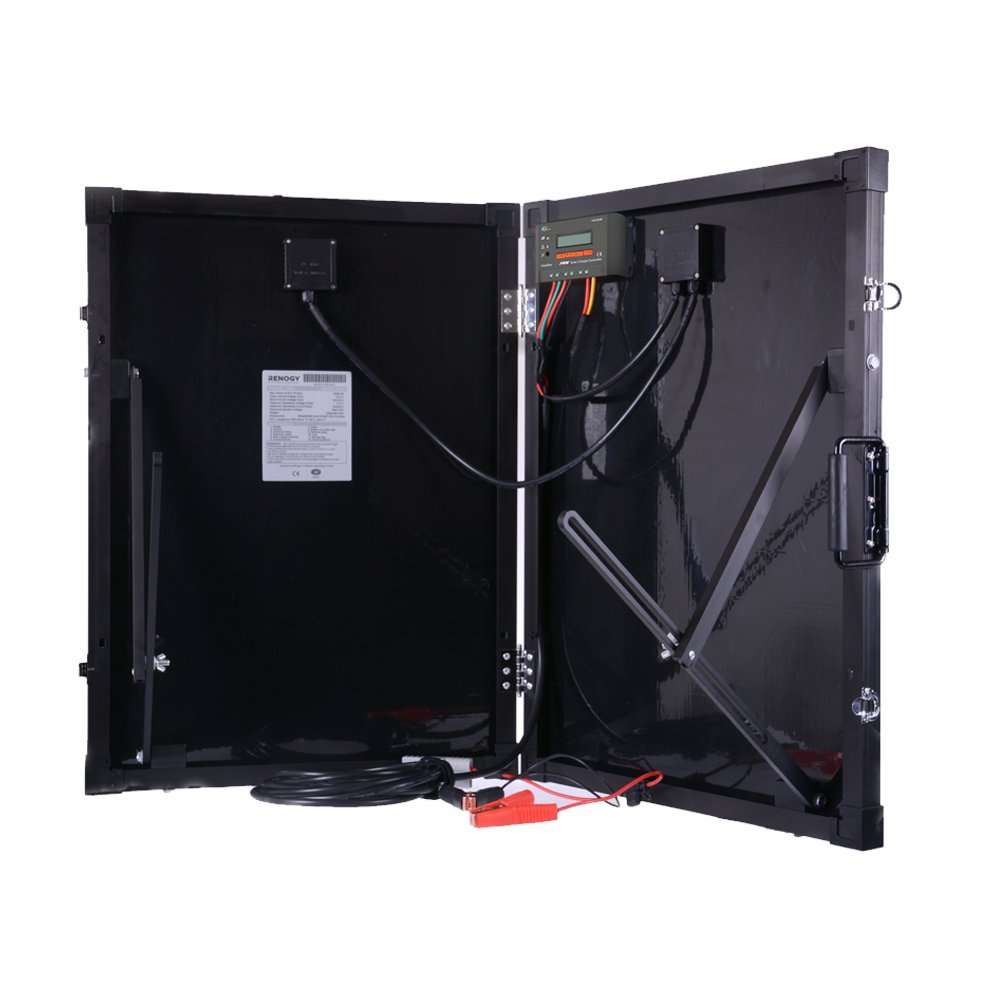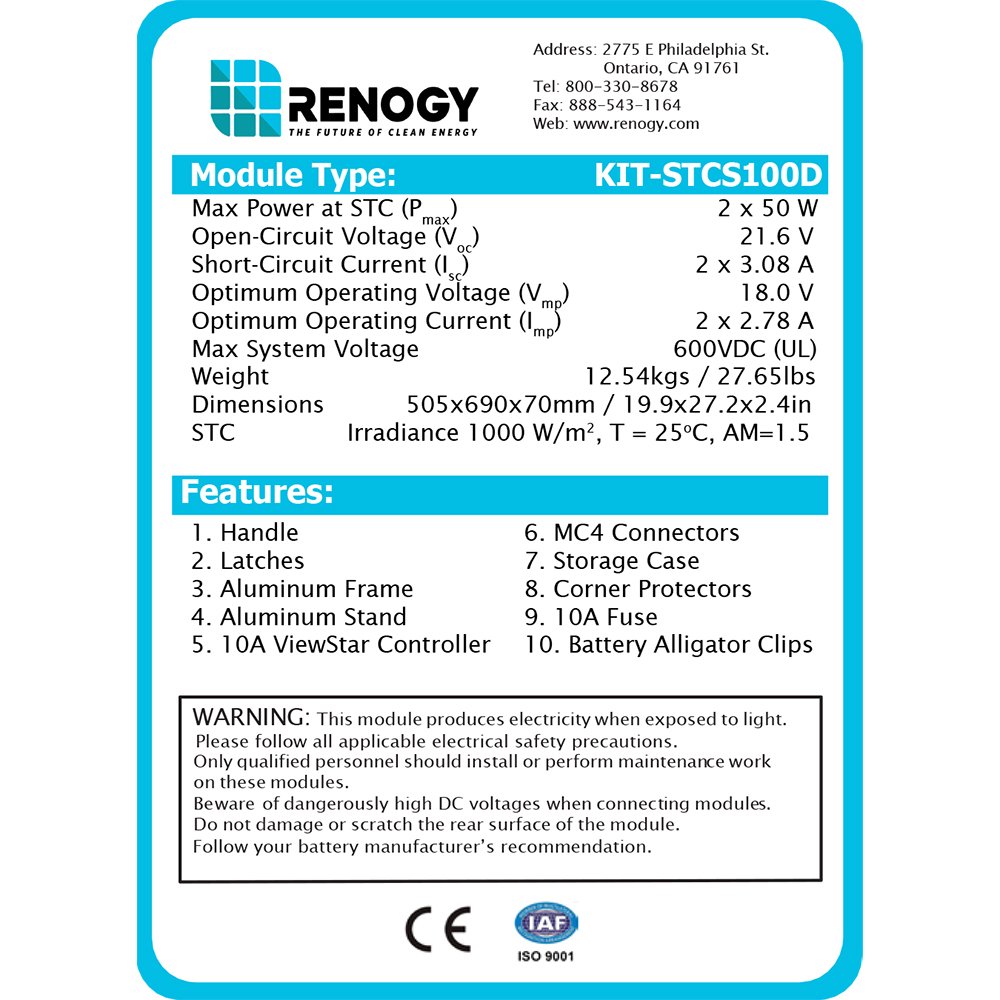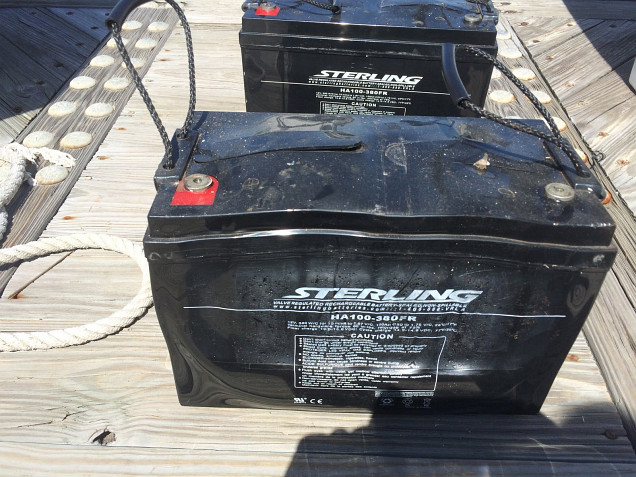The Asian AGM batteries commonly found in jumperpacks are not great batteries, and the plastic packaging it comes in seems to impart the consumer with more confidence in the product than deserves.
The following battery or one extremely similar is found in the bulk of jumper packs:
http://www.amazon.com/Universal-Pow...e=UTF8&qid=1457115189&sr=1-8&keywords=ub12120
Note on the side it says 3.6amps maximum charge current in both stand by and cyclic use.
The 100 watt renogy suitcase solar can exceed this. If the battery were depleted and you hook up the 100 watt panel in full sun, the battery's 3.6 amp charge rate could be exceeded, possibly leading to thermal runaway of the battery, or its venting.
Since by nature one can set up the solar panel only temporarily, the charge controller can be skipped and the panel hooked directly to the battery. a 50 to 60 watt panel would likely remain under this 3.6 amp maximum, and as long as one does not let the battery voltage exceed 14.9v, which requires human monitoring it, and a voltmeter.
Recharging this weakass jumperpack AGM battery from solar panel directly is certainly possible. It could be as easy as wiring on a Ciggy plug directly to (12v nominal) solar panel leads, and one could save a bunch of $$$ buying a 60 watt framed panel, compared to a suitcase solar package. One could also clamp the leads onto bare wire and avoid ciggy plugs which are horrible wasteful unreliable electrical connectors.
If leaving unattended when charging, then a controller is required to keep voltage from exceeding 14.9v.
These jumper packs are kind of a joke on the consumer. One pays highly for their convenience. The electronic guts within are cheap as can possibly be, the heart, the battery, is not intended for deep cycling, nor can it handle high recharge rates, nor does it have low self discharge of better AGM batteries.
Deep cycling these jumper packs will render their battery useless for jump starting quite quickly, within 40 to 50 cycles, but it depends on the engine and battery it has to assist as to whether it can do its job.
I recommend these jumper packs are kept for their original purpose, jump starting a weak vehicle battery, and kept at full charge for when that task becomes necessary.
Use the vehicle battery to power small loads, When this engine battery becomes too weak to start the engine, use the fully charged and still healthy jumper pack to start, then drive to recharge, and hopefully be able to plug in to reach a true 100% charge, which takes hours no matter what.
When the starting battery fails from deep cycling, get the largest marine battery which will fit to replace it.
If one cycles the jumper pack, the battery will likely not have enough gusto to help jump start the engine, rendering it nearly useless and instilling its owner with a false confidence.
The batteries within these jumper packs are not hard to replace, but sometimes one needs a long reach torx bit or other specialized tool to open them up to replace the ~25$ cheapo Asian AGM battery inside.






























































